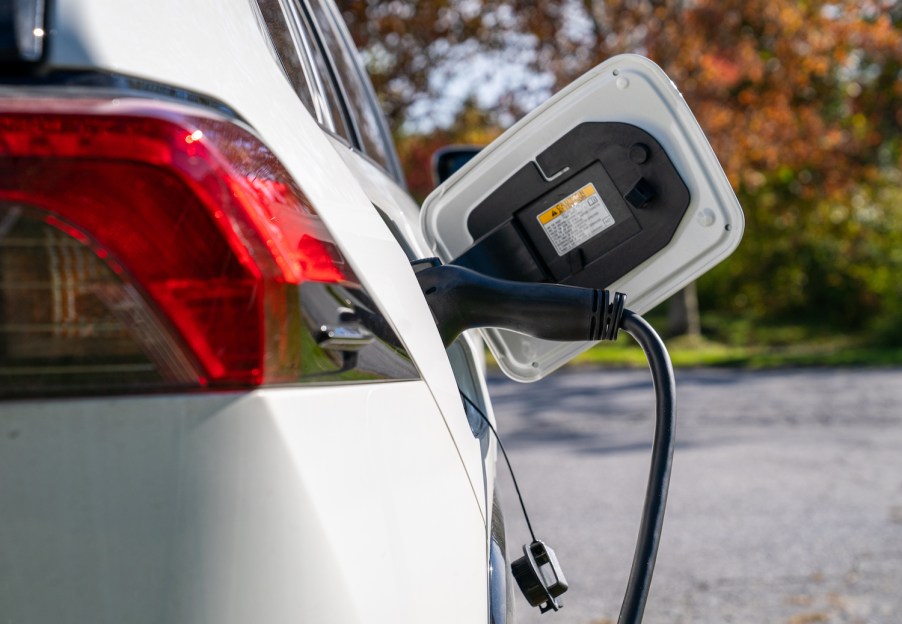
A Plug-in Hybrid (PHEV) Requirement Could Save Driving as We Know It
Here’s an interesting thought experiment: What if every new non-EV car had to be a plug-in hybrid? Implementing such a radical change in the automotive industry may sound impossible. But it might take such a radical change to save the automotive industry—and our planet.
Proposed 2035 combustion bans are purely political

Lawmakers in multiple countries have proposed—or even passed—combustion bans that will go into effect in the distant future. Many of these bans prohibit the sale of light-duty internal combustion vehicles starting in 2035. Places that have passed a 2035 combustion ban include Europe, Australia, and California.
This convenient policy allows present-day politicians to collect support from voters concerned about global warming. At the same time, the 2035 date guarantees that no existing administration needs to deal with the political fallout of enforcing such a ban.
Organizations such as Green Peace argue that the 2035 ban will be far too late. For example, to meet the Paris climate accords’ temperature target, Europe would need to ban all internal combustion cars by 2028.
One major problem is that new internal combustion vehicles, manufactured and sold as late as 2034, will spend decades on the road. Even if they are banned in the industrial world, they will likely be exported elsewhere. But outright combustion bans miss the goal: reducing carbon emissions doesn’t require preventing internal combustion engines from existing, it requires preventing them from turning on.
A PHEV requirement would eliminate 90% of carbon-emitting drives

Current plug-in hybrid electric vehicle (PHEV) electric-operation ranges under 39 miles may sound low, but you would probably be surprised by how few miles you drive in an average day.
American drivers are infamous for long tips. But a 2017 Statista study found that United States motorists only drive 25.9 miles per day. What’s more, that number is falling. A 2017 study published on Energy.gov went a step further, demonstrating that over 90% of all drives in the United States are 20 miles or shorter. Only 4.9% of drivers are longer than 30 miles.
A regulation requiring that every new vehicle offer at least 20 miles of all-electric range would eliminate 90% of all carbon-powered drives. If chargers at workplaces became standard, few Americans would need to use their internal combustion engines when not on a long road trip.
Today’s plug-ins could be tomorrow’s EVs

Obviously, the 4.9% of drives over 30 miles include some high-mileage, pollution-heavy road trips. But battery technology is a rapidly evolving field. With every automaker and many startups pouring funding into a better battery, advances such as solid-state EV batteries are on the horizon.
In a few short years, owners of EVs and plug-in hybrid electric vehicles may be able to buy replacement batteries that will double the vehicle’s stock range. PHEVs built today could continue to operate for decades, increasing their all-electric range with every refresh. Fully internal combustion vehicles built today are doomed to continue polluting with every drive—as long as they remain on the road. They even risk being banned before they wear out, robbing the original buyers of their investment.
If every vehicle must be an EV, starting in 2035, full-battery EVs may still be too expensive for the average car buyer. It is simply more costly to make a full EV with a battery pack big enough for long road trips than an EV with a smaller battery and an internal combustion engine for longer road trips. The looming lithium shortage will make this price difference even more pronounced.
As it’s written, a 2035 combustion ban could make owning and operating a new vehicle too expensive for most drivers. But if every 2023-2034 car is a plug-in hybrid, many available on the used market in 2035 with upgraded battery packs, future drivers will have abundant options for environmentally-friendly vehicles. An immediate plug-in hybrid requirement could save the planet–and save driving as we know it.
Next, find out whether old cars will be banned eventually.



